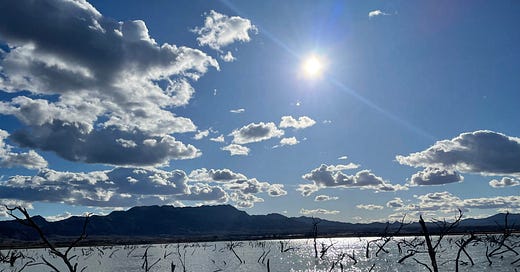defining an ecosystem
The ecosystem is the base unit of ecology, at the heart of every discussion about habitat conservation, biodiversity, and the environment.
But “ecosystem” is just one term, encompassing life at many scales. How do we really use it in our conversations about the environment? What can it mean?
The textbook definition of an ecosystem is “the complex of living organisms, their physical environment, and all their interrelationships in a particular unit of space.” Essentially, all of the living and nonliving components within some habitat boundary, including plants, animals, microbes, soil, water, and the climate itself.
Ecologists tend to define ecosystems at five different scales.
Global ecology looks at the Earth as an ecosystem unto itself. We study interactions between plant life and animal life, microbial communities and nutrients, oceans and atmospheres. We view our planet as one series of complex, interconnected processes.
The next level of ecology is ecosystem ecology, which is a little confusing when we talk about defining ecosystems at different scales. But consider this as ecology that incorporates all of the biotic (living) and abiotic (nonliving) components of a particular region or study system.
Ecosystem ecologists often focus on the flow of energy, matter, and nutrients through an entire ecosystem. This is the ecosystem scale that I find the most fascinating.
The next scale is community ecology, which looks at the interactions between different species occupying the same geographical area at the same time. This level of ecology typically focuses on the living components of an ecosystem.
Population ecology further refines the scale of ecology, encompassing just one population of a single species. Population ecologists often study group behavior, reproduction, and gene flow.
The final scale of ecology is that of individual ecology, which studies the behavior and strategies of an individual organism. How does it survive in its habitat? How does it interact with other members of its own species? With members of different species?
Sometimes it’s easy to define the boundaries of an ecosystem. In a lake, the ecosystem is contained within the body of water. But other times, the barrier of an ecosystem is nebulous, set by the researcher in order to inform their work.
Because when does a forest cease to be a forest? Trees don’t often stop occupying a space in a clear and abrupt line, but rather ebb and flow along the boundaries of other ecosystems. These transition areas are called ecotones, and can occur at any ecosystem scale.
This ambiguity forces the researcher to choose the limits of their study system, to say “This is where the forest ends and where the grassland begins.”
And this allows us to define ecosystems that we might not have considered in the past. When we talk about ecosystems we typically imagine areas like forests, deserts, lakes, and tidepools, but we can also study cities, the human body, or even a single cell as their own ecosystems.
People have been arguing about what defines an ecosystem since the conception of the term. In the 1920s and 30s, ecologists Frederic Clements and Henry Gleason published contrasting interpretations of ecosystem structure.
In essence, Clements defined an ecosystem as an interconnected superorganism of plants that grow, mature, and die, while Gleason argued that ecosystems are assemblages of individuals established by their physical environment.
These perspectives still influence our definitions of ecosystems.
As we delve into complex underground networks of roots and fungi, the Clementsian superorganism seems likely. And yet when we look at the individual strategy and struggle for life in each singular organism, the Gleasonian definition makes sense.
In the end, all of our definitions of ecosystems are products of human perspectives, lenses through which we try to understand a varied and complex environment. Each interpretation has value.
Whenever I spend time in nature I try to consider each ecosystem I encounter through all of these different angles.
And then I try to drop all of my pre-conceived notions of ecology and just experience what it feels like to exist within that ecosystem. I think that might be the most important definition of all – the way we define our own relationship to the environment. How do we fit into our ecosystem? How do we live in community with all of the other biotic and abiotic elements?
In science and policy, we can quickly remove the nuance from a term, use it clinically and only as needed. So I believe it’s important to consider how deep and descriptive a word like “ecosystem” can be.
When ecosystems are so important, so fundamental to our discussions of climate and biodiversity, they deserve a moment to be contemplated and understood.



